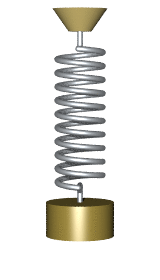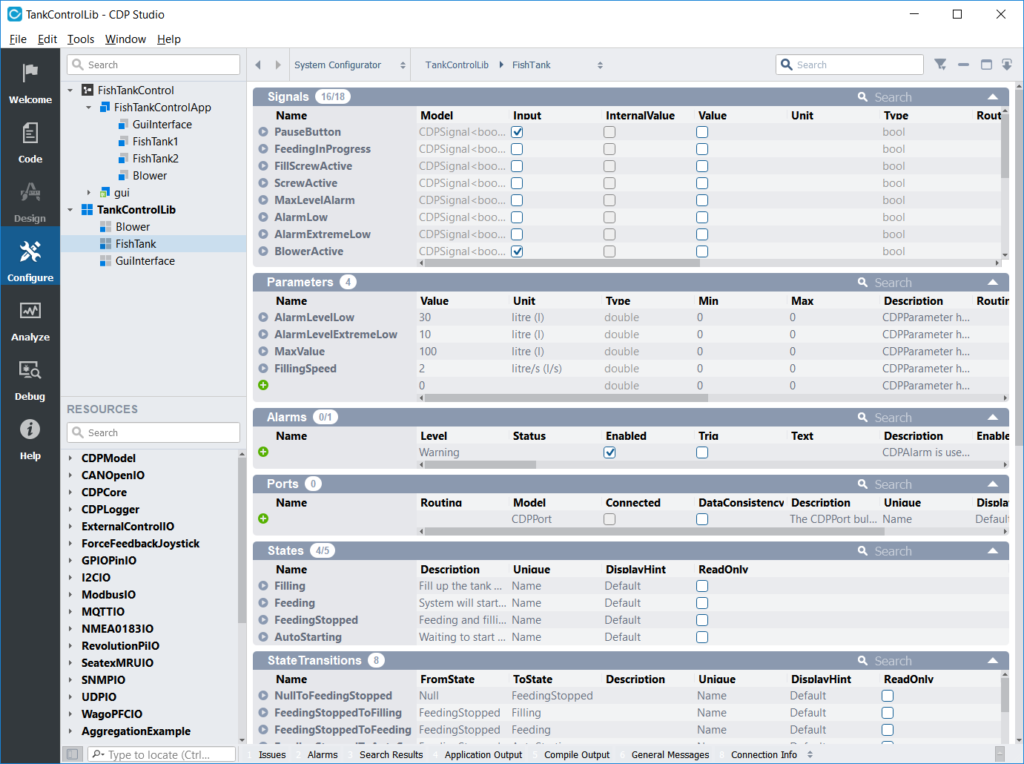
The Block Editor – a brand new graphical programming tool
This release introduces the new visual programming editor – the Block Diagram. The editor allows you to create systems by adding new components (function blocks) with drag-and-drop and connect the blocks together to create a working system, all graphically.
The Block Diagram shows a visual representation of the system and gives a very good system overview.
The Simulator

(Svjo / © CC BY-SA 3.0)
The simulator CDPSim is a toolkit for modelling and creating real-time simulations of physical systems. This add-on makes it possible to integrate a simulation model with CDP control systems, user interfaces and virtual 3D models – all running in real-time.
One important application is to replace real hardware in Hardware In the Loop testing (HIL testing). This allows you to test systems without having access to the complete hardware setup during development and when the complete system is not available, e.g. debugging customer reported bugs.
The simulator can be used to build 3D simulators to create a virtual training system running in real-time using the actual control systems with GUI and control leavers. The Control system is then connected to a 3D visualizer.
Model Editor – working with C++ components from Configure Mode
The Library Model Editor is upgraded so you can create and manage signals, parameters etc for your components written in C++ in Configure Mode. This simplifies further the task of creating the components in C++ as the model editor automatic generate code and modify the C++ source files.
The Library Model Editor gives also a very good overview of the component.

Ports
Ports is a powerful new feature that allows you to combine any data (including signals, parameters, properties, signal channels etc) into a single port.
The information in a Port may be synchronised, so that all data is sent and received in the same time packet.
The Port simplifies the routing in projects, when switching routing in real-time, enables to easy switch between a simulated component and a physical system etc.
See the 2 examples and the in-depth tutorial application examples and how to use the new Port feature.
Analyze mode and Signal Graph Widget enhancements
A number of enhancements has been made in the Analyze mode, this includes support for saving/loading Analyze mode configurations, setting alias names, editing min/max values on the y-axis, setting start time, cursor beam visible on all plots at the same time, support for hiding the legend and automatic restore of Analyze mode settings when the project is reopened.
Integrate developer documentation
CDP Studio allows you to create libraries that contain function blocks (components) that can become the company’s toolbox and be shared between all the developers.
The new feature supports the possibility to add documentation to each component. When the libraries are shared in the company, the documentation is seamlessly integrated with the CDP Studio documentation and can be looked at in Help mode.
Pre-license CDP application
It is now possible to pre-generate licenses for CDP applications. This is very useful when licenses must be generated for hardware that is not online or otherwise available at the time when the license must be generated.
New examples and tutorials
A number of new examples and tutorial are added, this includes practical examples of how to interface or use external systems like Python and OpenCV.